FIGS, FIGS AND MORE FIGS
We have a gigantic fig tree in our garden and we have no clue how to look after figs or tend to such a huge tree. For months now the tiny under ripe figs have been falling off of our tree and we have been trying to work out if it’s insufficient watering, drought, lack of fertilizer, too much direct sunlight or birds pecking the figs off. I didn’t think they would stay on the tree long enough to ripen and become edible. We were patiently waiting for the figs to turn brown so we could sample them then I joined a fantastic Facebook group called Figs, Figs, Figs and realised that I actually have green figs. I just assumed figs were all brown. The tree is very unkempt and needs a severe prune in the fall.
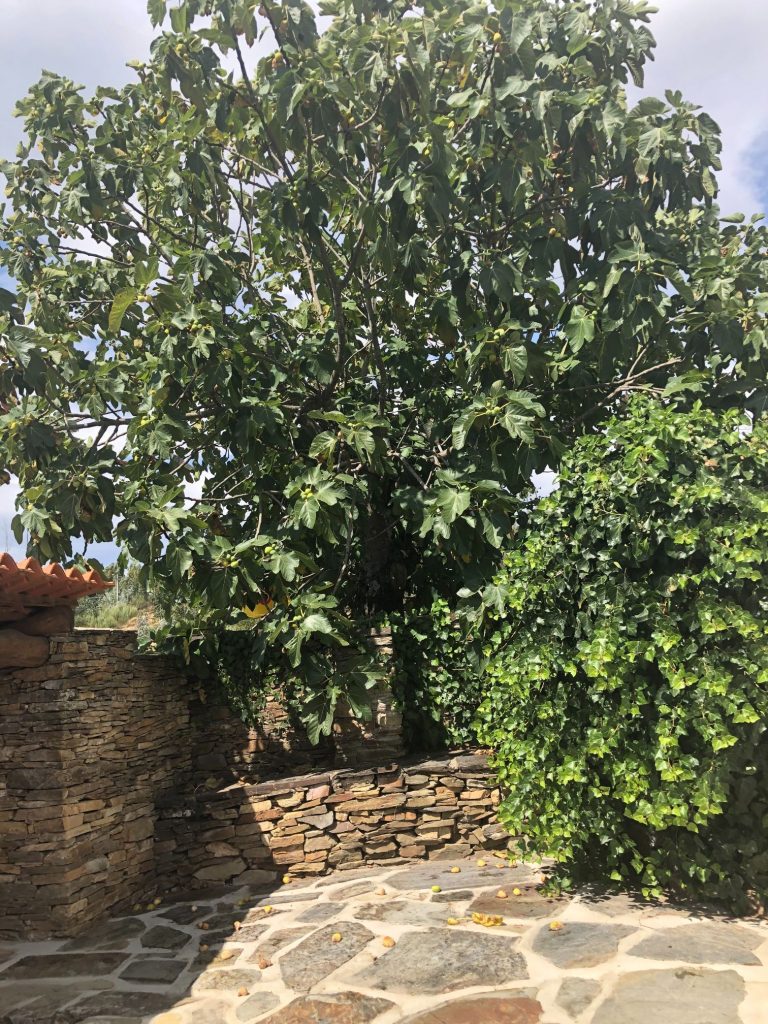


I am ashamed to say that I never tasted a fresh fig in the U.K, only sugared figs at Christmas time so was very excited to try them here. Our figs are so very sweet like honey and absolutely delicious. The flesh is a beautiful pinkish colour, just divine. It took me some time to actually eat them whole with the skin on and I’m still a little uneasy about the texture of the skin in my mouth but they really do taste marvellous. We have so many that we have been very inventive with recipe ideas. We froze such a huge amount to make jam, chutney and fig tarts for Christmas that the freezer is now full to capacity. Hubby was considering buying a chest freezer just to freeze the figs but I told him he can fig off (ha ha). I also offered a one time deal to my Portugal Facebook friends: All the figs, hubby and a freezer. Unfortunately no one wanted the figs or the freezer but I got 3 takers for hubby. I kindly explained to these nice ladies and one gentleman that the deal is not negotiable, it’s a trio offer, all 3 or nothing at all (ha ha). They would only bring hubby back for a refund once they knew he keeps multiple screwed up bits of paper in all his pockets and he drops loose change (coins) everywhere around the house. Sometimes I just stare at the 10 cents on the floor and think to myself is it worth the energy to bend over and retrieve it! Oh and by the way, if you ever thought that having too many figs was not a thing, your wrong, I’m pooping through the eye of a needle (ha ha).
We are considering buying a hydrator to dry our figs, tomatoes and chillies as I don’t like the idea of drying them in cheesecloth inside the house and attracting insects. The main problem is that figs are ready to harvest July/August/September and we can pick over 100 figs per day! Many are too far out of reach, I did try climbing the tree but it ended in disaster and I got stuck like a cat so I’m not allowed to try that method anymore. Loads drop to the ground and many fall onto our patios below and dry out in the sun leaving a huge sticky mess which is virtually impossible to remove and attracts families of ants. No amount of scrubbing and power hosing down removes 100% of the mess and this is a daily event during harvest time.
How to tell that a fig is ripe and ready to pick (sight, touch and taste)
When it changes colour to a lighter green (other varieties will change colour from green to brown or purple).
Slight cracks will appear on the fig.
The fig will droop from the stem.
Soft to the touch (an unripe fig will be firm).
A ripe fig should be sweet (an unripe fig will taste horrid).
Our variety expel a drop of sweet sticky liquid on the base of the fig (we call it the ‘fig spunk’ but the proper name is pingo. So I need to start calling it pingo and not fig spunk as it sounds much better (ha ha).
Mature figs separate from the tree easily and the stems won’t produce a milky sap after picking. Those that exude sap aren’t fully ripened yet.
Unlike other fruits, a fig will not continue to ripen after it is picked.
Variety
There are hundreds of variety of fig trees. I find the names fascinating, such as Brown Turkey, Purple Genca, Black Mission, Kadota and Calimyrna (which sounds far too much like Chlamydia for my liking ha ha). We have come to the conclusion that we may very well have the variety of ‘Pingo de Mel’ which translates to drop of honey and is commonly grown in Portugal and Spain. This variety expels a drop of sweet liquid (pingo) on the base of the fig. Experts say this is the best time to pick them.
Eating wasps
Figs are pollinated by the female fig wasp which crawls inside both male and female figs to lay their eggs. The female wasp burrows inside the fig through a narrow opening. Figs contain an enzyme that breaks down the female exoskeleton. So there is at least one dead wasp inside the figs that we like to eat. When hubby told me this story I was a little repulsed but the fig wasp is only 1.5mm in length so it’s not a regular huge wasp which makes me feel a little better. I have now come to terms with this fact and I have had far worse things in my mouth over the years if you know what I mean (ha ha). This is why figs are not vegan.
Freezing figs
If you have a surplus of figs and have made enough jam to last you until you are 86 then freezing is a great way to preserve them until later on in the year. Just wash the whole fig, trim off the stem and freeze whole in tupperware boxes. Make sure you weigh the figs prior to freezing and write the weight on each box. This means you will know the exact weight for jam making and recipes later on as frozen they will weigh more. if you want to make jam from the frozen figs just get the figs out of the freezer the night before and defrost in the fridge overnight.
Helen’s simple fig jam recipe (no added pectin)
Ingredients:
- 3 lb of figs, stemmed and cut into small pieces.
- 450 grams of granulated sugar.
- 100 ml of water.
- Lemon juice from 1 lemon (we stole a lemon from our neighbours tree).
- Pinch of salt (I forgot to add this!).
- For extra flavouring you can add 1 cinnamon stick, cloves or vanilla pod/essence and substitute some of the sugar for honey if you wish. I added some cinnamon powder and a teaspoon of vanilla essence as that’s all I had in my store cupboard.
Instructions:
- Put jam jars and lids though a hot cycle in dishwasher or boil in a pan of water for 10 mins. You can also sterilise jars by putting them in the oven but I would probably just end up blowing up the oven, resulting in glass everywhere as I’m very accident prone (ha ha).
- Place all the ingredients into a medium sized pan.
- Bring to the boil until the sugar dissolves, stirring regularly.
- Reduce the heat to low and allow the figs to cook uncovered for up to 60 minutes.
- Once the liquid is thick and sticky remove from the heat and discard the cinnamon stick and vanilla pod if you used them.
- For a smooth jam blend in a food processor.
- Fill jam jars with the jam leaving a gap at the top of about 1/2 inch.
- Once cooled to room temperature you can store in fridge for up to 2 months.
- It made X4 large 450 gram jars. I blended half so 2 chunky preserve (like me) and 2 smooth jam (like hubby) ha ha. Apparently the difference between jelly, jam and preserve is the thickness and how much of the original fruit is used to make them.
If you want to store your jam non refrigerated for a year in a dark store cupboard you need to go through the canning process to preserve the jam. Hubby eats a jar of jam per week so there was no need for us to do this process although we did sterilise the jam jars prior to using due to the fact that we recycled old jam jars. Some people have difficulty with their jam thickening. I didn’t have any issues at all but if you do make sure you boil first to a high temperature before reducing the heat to simmer. I could not be bothered buying a jam thermometer as the nearest shop is far.
Conclusion
I don’t think figs will ever become my favourite fruit although the jam is epic tasting. We plan to buy a couple more fruit trees in the fall. I am hoping to buy a cherry tree and maybe some raspberry canes. I’m waiting for all our melons to grow then I can make space for the trees. Our lemon tree is not really looking that healthy but it’s surviving and our neighbour has a huge lemon and lime tree so it’s fine. I like the idea of growing different fruits to our neighbour so we can do swaps. She doesn’t live there and only pops back to do a bit of gardening hence why it is so difficult to give away our surplus fruit and veg supplies. I love not having any neighbours but when you have all the figs in the land, you just wish you had a neighbour or two!

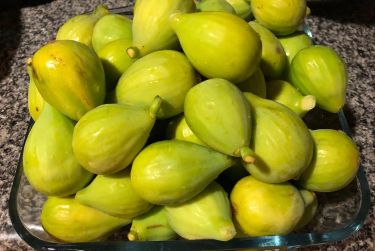
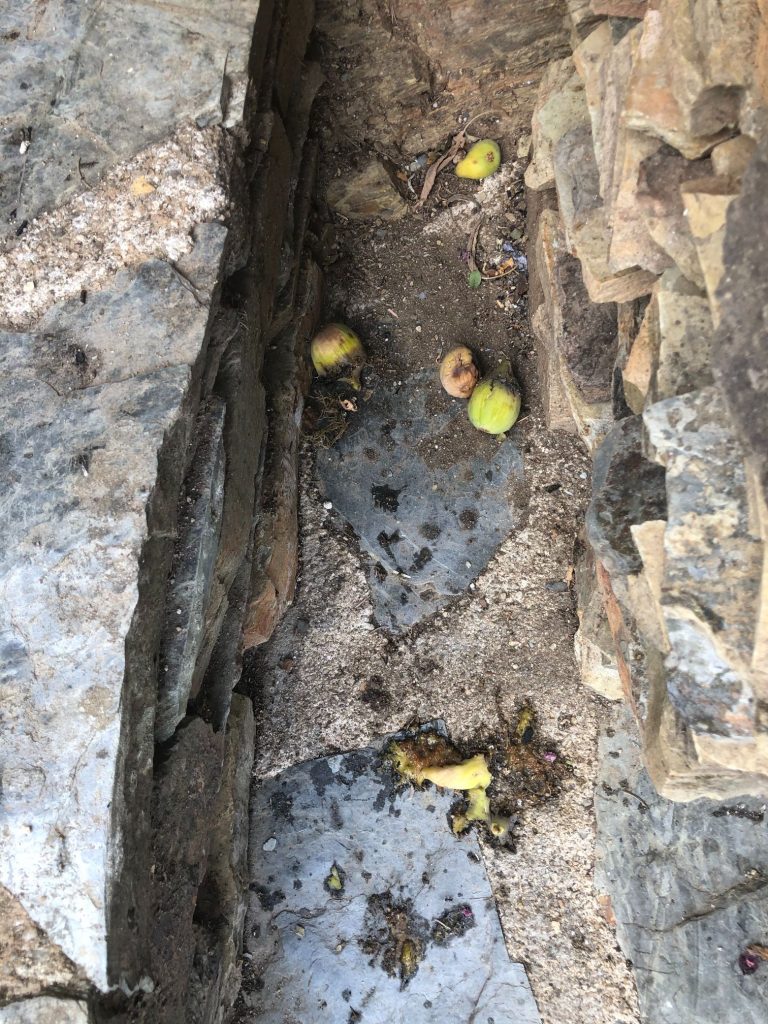
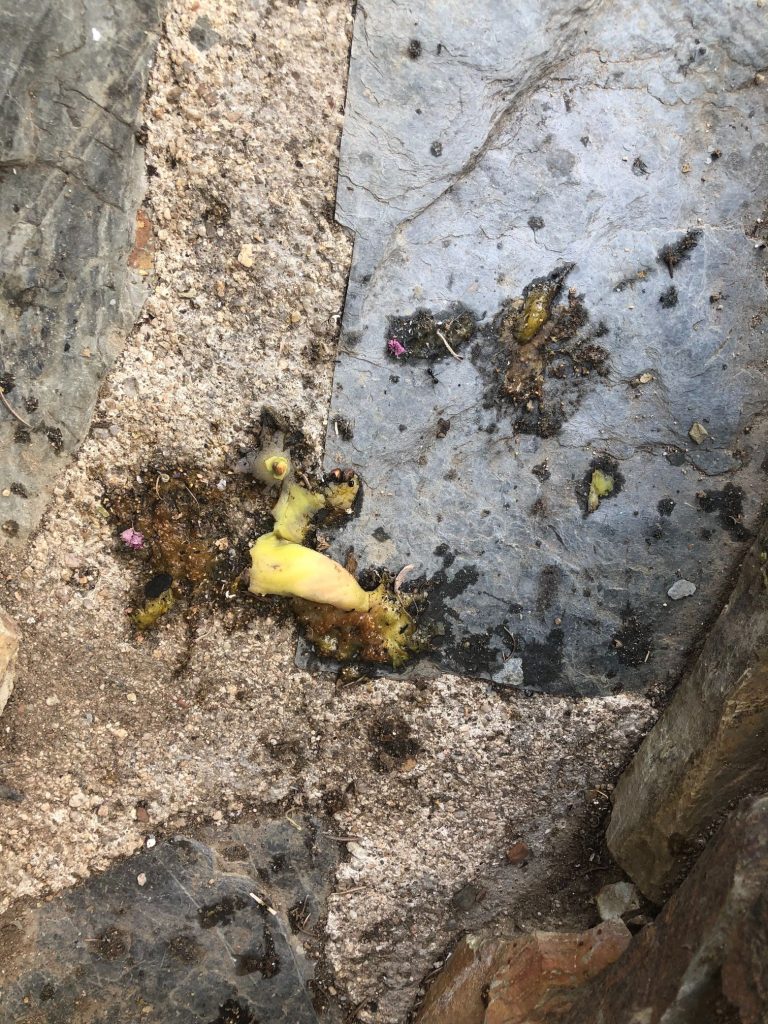
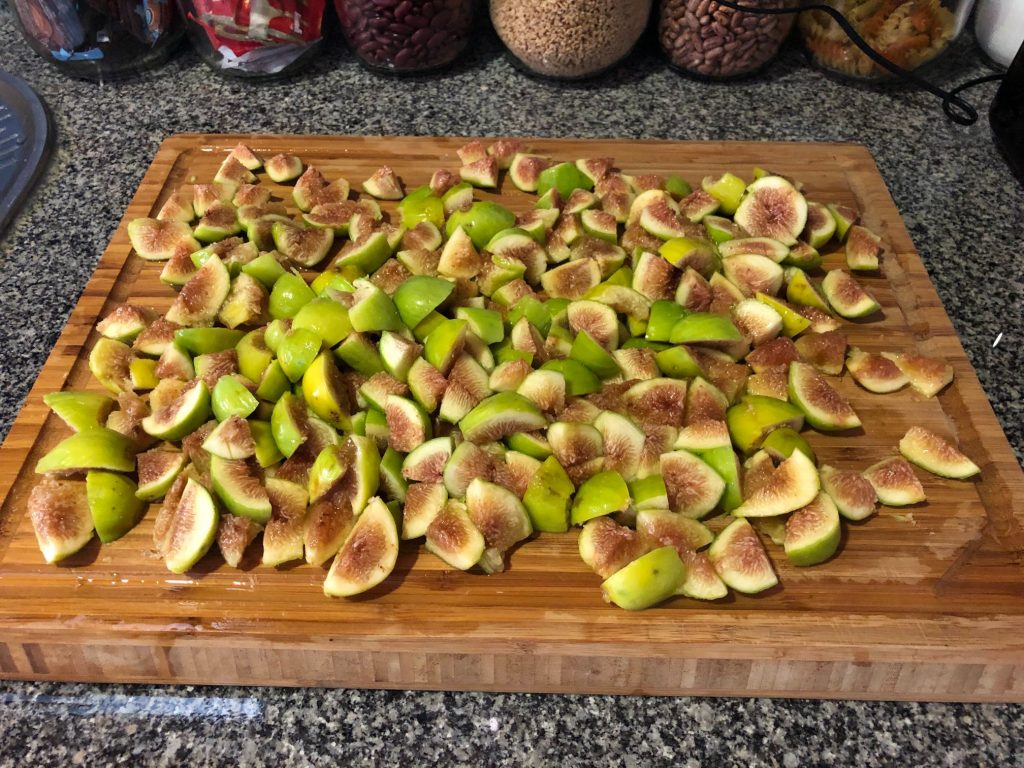




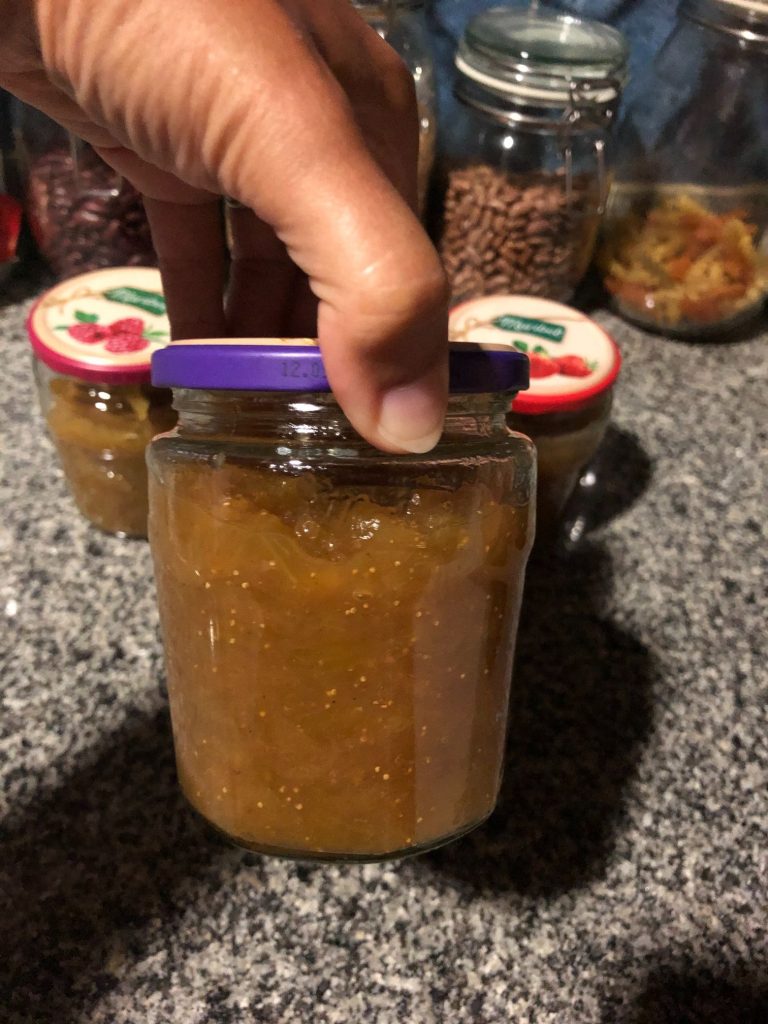





2 Comments
Graham Ogle
5 years agoHi,
I had my first yellow figs this year near Tondela and couldn’t believe how sweet, almost syrupy they were. Absolutely fantastic and jealous that you have one in the garden. Currently eating brown figs collected off a tree on a bit of “scrap” land near the house.
Looking forward to planting a fig tree or 2 when we finally get settled.
Enjoying the blog.
Graham
Helen
5 years agoHi Graham,
I was very surprised at how sweet they taste, delicious but I am literally OVER figs now ha ha.
Thanks,
Helen.